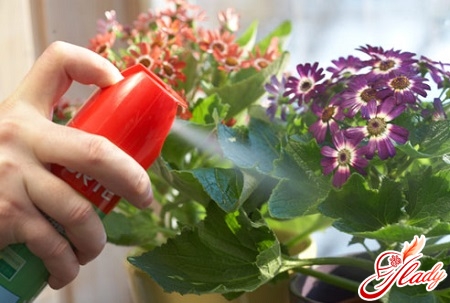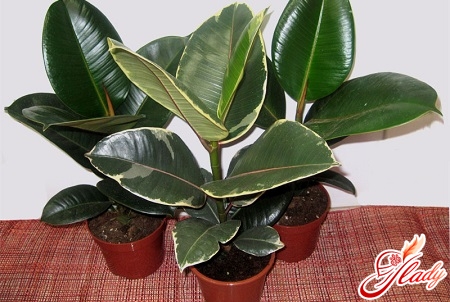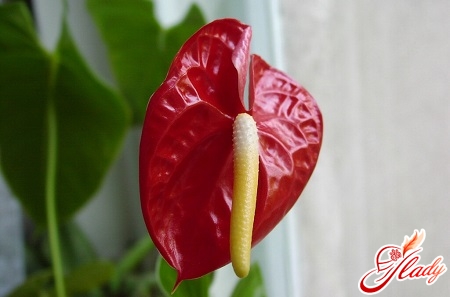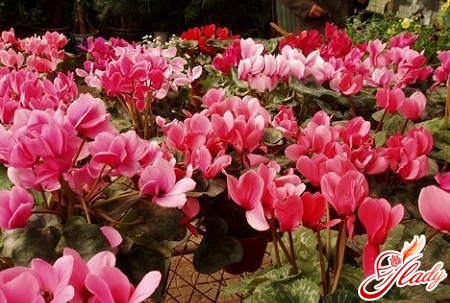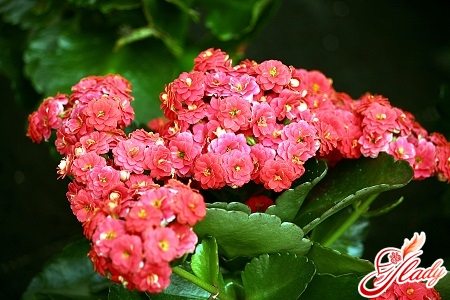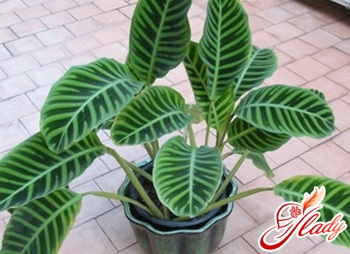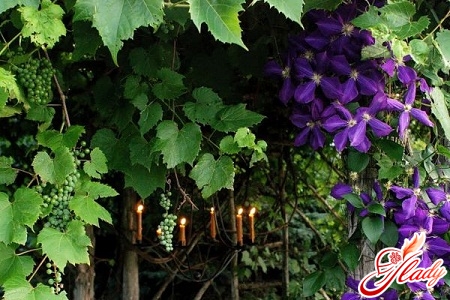 Remember the cartoons about Mowgli and Tarzan?What jungles were there, entwined with flexible vines, climbing up tree trunks and snaking along the ground? Perennial vines for the garden have the same properties - to climb, entwine, climb up and spread out to the sides. A kind of unique greeting from the jungle. Of course, the cultivated and ennobled vines in our gardens are little reminiscent of the wild inhabitants of the tropical forest, but still. Still, they are similar to them in that they also need to lean against something, rely on something and cling to something. And it is this property of vines that is indispensable in landscape design. With their help, it is possible to make the garden especially beautiful, decorating unpresentable walls and fences, as well as any vertical, above-ground and near-ground space. What types of vines are there for the garden, and what exactly should you choose for your little piece of paradise? Let's figure it out.
Remember the cartoons about Mowgli and Tarzan?What jungles were there, entwined with flexible vines, climbing up tree trunks and snaking along the ground? Perennial vines for the garden have the same properties - to climb, entwine, climb up and spread out to the sides. A kind of unique greeting from the jungle. Of course, the cultivated and ennobled vines in our gardens are little reminiscent of the wild inhabitants of the tropical forest, but still. Still, they are similar to them in that they also need to lean against something, rely on something and cling to something. And it is this property of vines that is indispensable in landscape design. With their help, it is possible to make the garden especially beautiful, decorating unpresentable walls and fences, as well as any vertical, above-ground and near-ground space. What types of vines are there for the garden, and what exactly should you choose for your little piece of paradise? Let's figure it out.
Botanical features of lianas
Lianas are plants that have a climbing habit.trunks and branches. They cannot grow upwards on their own and need support (this is their “parasitic” way of existence!). Other plants (trees and shrubs), rocks and stones, house walls, and fences serve as support for vines. And in garden design, special decorative supports are used for vines: trellises, pergolas, arches. In order to stay on the support, vines use various (sometimes very tricky) devices. Some of them, without much ado, simply twine around the support, others lie on it with long flexible branches. There are also those that, like wisteria, twine around the support only with their tops. Other vines cling to something with special tendrils (grapes), while others use sucker roots for these purposes (trumpet creeper, ivy). But regardless of the "fastening method", all perennial vines can be divided into two main botanical types: woody and herbaceous. The former grow like trees, each season renewing their upward growth and preserving the stems and branches that have already grown. Herbaceous vines preserve only the root for wintering, and their above-ground part dies off each autumn. In the spring, these vines (like many perennial flowers) release new shoots from the root with decorative leaves or beautiful flowers. By the way, depending on what exactly (flowers or leaves) attracts a particular plant, vines can be divided into two more large groups.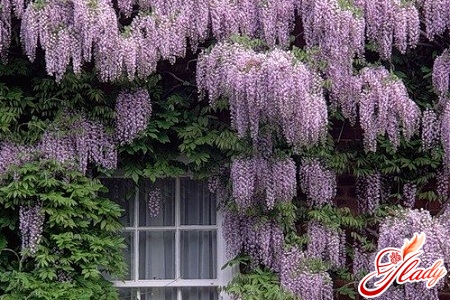
Decorative vines
Of course, almost everything (or almost everything)plants bloom! Only some have large, bright, flashy flowers, while others are small and inconspicuous. But these “others”, as a rule, have simply gorgeous foliage, for which they are valued in garden design. Among the well-known decorative foliage vines, maiden grapes stand out. Many gardeners do not particularly respect this unpretentious vine, but in vain. Firstly, this plant is extremely frost-resistant. Secondly, maiden grapes grow very, very quickly. Thirdly, it tolerates pruning absolutely painlessly, which makes it easy to control its growth and improve in topiary art. In addition, maiden grapes are a densely foliated vine and allow you to create almost “impenetrable” green walls and protect well from the sun. And in the fall, this vine is so elegant and colorful that it will successfully replace any autumn flowers. Ivy grows “slowly but surely.” Its curly greenery will be an excellent cover for the shadiest corners of the garden. It can be used to decorate tree trunks, squeezed into alpine slides and in a rose garden. In addition, ivy is perfect for vertical gardening of walls, given that it retains its green color in winter. And in addition to this, it does not destroy brick, concrete, or wood. Hops, actinidia, Chinese magnolia vines, and honeysuckle-caprifolium can be classified as conditionally decorative leafy vines (after all, they bloom!) . Honeysuckle blooms for a short time, but has unusually shaped leaves and bright (but inedible) fruits. Schisandra and actinidia, on the contrary, are often grown as fruit crops. But hops, of course, are beautiful and lush. But once you plant it in your garden, you are unlikely to be able to get rid of it. The creeping roots of hops will entangle the entire area, releasing more and more new shoots in all corners of the garden. So be careful when choosing such plants. They can be very aggressive, and like weeds, will cause you a lot of unnecessary trouble or even difficult to solve problems. Be sure to find out what surprises or "dirty tricks" the vines are capable of, with which you are going to decorate your garden, using them as green walls or roofs.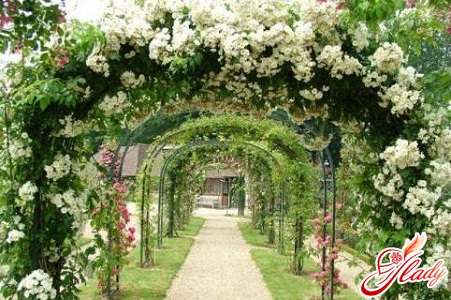
Lianas with beautiful flowers
Beautiful flowering vines in the garden is justнаходка для любого ландшафтного дизайнера. С их помощью можно преобразить абсолютно любой сад, превратив его в произведение искусства. Покрытые цветами арки и перголы станут и так называемой «изюминкой» или прекрасно дополнят уже сформированную архитектуру сада. Их можно использоваться и в качестве почвопокровных растений, и для декорирования строений, и сделать отдельными яркими элементами ландшафта. «Самые-самые» из них – это плетистые розы и клематис. Они по праву возглавляют список красивоцветущих лиан для сада. Ни одно другое растение (из ряда подобных) не в состоянии тягаться с ними по красоте цветов и пышности цветения. Поэтому именно о них – немного подробнее. Плетистые розы. Большинство сортов цветет только один раз в сезон, обычно в конце мая и в июне. Но зато как они цветут! Растение просто усыпано цветами – это умопомрачающе красиво! А цветы на плетистых розах могут быть и белыми, и красными, и желтыми, и розовыми все оттенков. Пусть на короткий срок, но ваш сад (или его часть) окутается шикарной розовой пеной. Эффект просто сногсшибательный! Никто не сможет пройти мимо, не остановившись и не восхитившись вашей плетистой розой. Но если такое краткосрочное и обильное цветение вам кажется недостаточным, выберите сорт плетистой розы, способной цвести все лето. Да-да, есть и такие. Например, роза Нью Даун. Это сильнорослое (до трех метров в высоту) растение с нежно-розовыми, почти белыми цветами, которые издают приятный аромат с яблочными нотками. Листва у нее темно-зеленая, густая и мелкая, с глянцевым блеском. Цветет она беспрерывно, а живет долго. В британских парках есть розы этого сорта, которым уже больше ста лет! Клематис – еще один королевич вашего сада. Считается, что растение это капризно и прихотливо. Отчасти это так, но, скажите, кто из аристократов не капризничает? Учитывая необыкновенную красоту клематиса, некоторые его прихоти вполне простительны. Сортов этой лианы великое множество, и делятся они на группы: Жакмана, Ланугиноза, Флорида, Витицелла. О каждой из этих групп можно говорить много и бесконечно. Поэтому отметим, лишь то, эта классификация позволяет сгруппировать клематисы по окраске и форме и цветков, а также по агротехнике. Другие красивоцветущие многолетние лианы уступают и розам, и клематисам, но они не менее декоративны, а потому и не менее популярны у садоводов. Кампсис – древесная лиана с ажурной листвой и красными или оранжевыми цветами-граммофонами. Глициния цветет шикарными розовыми или сиреневыми кистями, но подходит исключительно для южных регионов. Гортензия вьющаяся порадует вас цветением в июле и августе. Ее соцветия в форме зонтиков достигают двадцати сантиметров в диаметре. В более ранние сроки (июнь, июль) цветет калистегия — травянистая лиана до четырех метров в высоту. Цветет она обильно, небольшими (но очень привлекательными) махровыми бело-розовыми цветочкам. Азарина – не очень высокая лиана, цветущая со второй половины лета до первых заморозков. Многие виды пассифлоры (известной комнатной лианы) прекрасно живут в открытом грунте и подходят для сада. Цветки у нее крупные и ароматные, похожи на представителей инопланетной флоры. Описать все многообразие многолетних лиан просто нереально. Есть среди них и неприхотливые экземпляры, есть и такие, с которыми придется повозиться. Но вы наверняка сможете выбрать то, что подойдет именно вам и станет настоящим украшением именно вашего сада. Потому что лианы в саду – это не только красиво, но зачастую еще и полезно! Так что обязательно поселите на своем участке этакий «привет из джунглей», и вы непременно останетесь довольны результатом. Советуем почитать:




